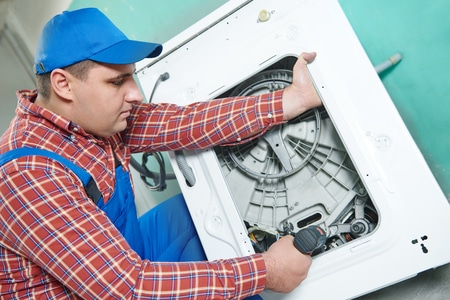Having a pile of dirty clothes when the washing machine is not working can make most people anxious. Like any other household appliance, the washing machine can also malfunction which can make your job difficult. Some of the common problems associated with washing machine include machine not starting, washing machine not heating water, water leaking from the washer, water not draining properly, and several other problems. Some of these problems can be addressed without getting help from machine service technician. For others, you may have to get help from an appliance repairman. When hiring an appliance company, make sure offer their services in both residential and commercial areas. At times, the washing machine may not heat water which can make your job difficult. Here are some common causes of this problem.

Here’s what to test when you have washing machine not heating water problem:
Water Inlet Screens And Hoses Washing Machine
The washing machine is connected to the water supply of your house by fill hoses. The tube has a wire mesh at the end that prevents dust and sediments from entering the machine. If the machine does not fill with either cold or hot water, you must check if the inlet valve is blocked. At times, the hose may be kinked, which can prevent water from entering the machine. To inspect the inlet hose, you must turn off the faucet. Check the wire mesh and clean or replace it if it is dirty.
Water Inlet Valve Washing Machine
The water valve supplies both hot and cold water for washing and rinsing. The valve will usually have two solenoids, which operates the inlets of both hot and cold water. Some of the components that control the valve include water temperature selector, timer control, and the water pressure switch. If the washer is not filling hot or cold water and there is sufficient water pressure to machines inlet valve, you must check if there is power to both the solenoids during the filling process. This can be tested using a voltage tester or multimeter. Since this is a live voltage test, it must be performed by washing machine technician.
If power is available at both solenoids, then the valve could be defective and must be replaced. When there is no power at the solenoids, you must check other components in the valve circuit. If you are unable to check the valve for voltage, you can check both the solenoids for continuity using a multi-meter. If the solenoids don’t have continuity, you must replace the valve set, as solenoids are not available separately. Make sure you remove the power supply to the machine before performing these tests.
Lid Switch
This component is designed to prevent the washing from operating when the lid is open. If the lid switch fails, it cannot supply power to the inlet valve circuit. The switch is usually located beneath the main top and is connected to a pin that activates the switch when the lid is closed. Make sure the switch is activated mechanically, and the actuators and levers are not damaged. If the switch is activated, but there is no power at the valve circuits, it indicates the switch may be defective. To check the condition of the switch, disconnect the power supply to the machine and remove all the wires connected to the switch. You can test the status of the switch using a multimeter.
Selector Switch
This switch selects the water temperature for the rinse and washes portion of the washing cycle. It provides a circuit to supply power to the solenoids of the inlet valve. If there is no power at the solenoids, then selector switch could be the culprit. You can check the continuity of the switch using a multimeter. Please note that you should not attempt washing machine repair or service at home without disconnecting the power supply to the appliance.
Pressure Switch
In most machines, this switch is a part of the inlet valve circuit. The water level pressure switch is usually located behind the washer’s control panel. On some machines, the switch may be located in the sump area under the washing tub. You can check the condition of the pressure switch using a multimeter. You may also need the wiring diagram of the machine to find out which terminals to check on the pressure switch. Make sure you disconnect the power supply to the appliance before you perform this test.
Things to check to identify possible problems that need washing machine repair service
- water inlet valves
- inlet hoses
- Top load washing machine water level
- wash cycle
- water supply
- heating element
- washing powder
- water fills
- stain removal
- electronic controls
- washing machine displays
- modern washing machine error codes
- top loading washing machine filter stuck
- washer won’t fill with water
Other Locations in Broward County:
Weston, Lauderdale Lakes, Washing Machine Repair, Oakland Park, Cooper City, Appliance Service, Appliance Repair Pembroke Pines, Lauderhill, Clothes Dryer Repair, Washer And Dryer Repair, Washer Repair, Davie, Laundry Dryer Repair, Best Appliance Repair Hollywood, Dania, Appliance Service Fort Lauderdale, Sunrise, Tamarac, Hallandale, Margate, Plantation, Appliance Repair Coral Springs
